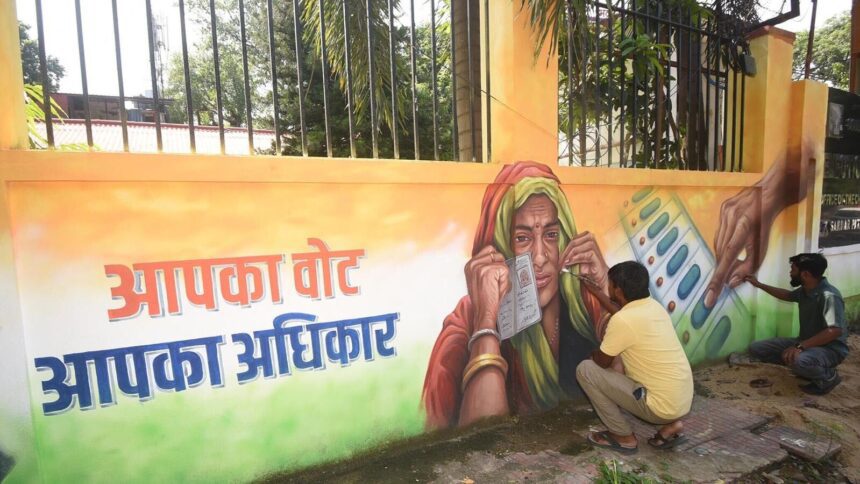Many of these announcements are poll promises: the parties may not win, the winning party may scale them back, or introduce caveats to limit beneficiaries and costs. Yet, the current tally of promises is enormous, especially for a state in urgent need of infrastructure development and job creation.
Bihar assembly election is scheduled to take place in two phases, on 6 November and 11 November, with results expected on 14 November. Key alliances include the ruling National Democratic Alliance (NDA), led by the Bharatiya Janata Party (BJP) and Janata Dal (United), and the Mahagathbandhan, led by Rashtriya Janata Dal (RJD) and Congress. A new party by political strategist Prashant Kishore, the Jan Suraaj Party, has also entered the race, making it a three-way contest this year.
Bihar’s per capita net state domestic product (NSDP), a measure of income, is just ₹69,320 per year—the lowest in India. Between FY23 and FY25, the state recorded 8.6-12.8% growth in gross state domestic product (GSDP), bringing the compounded average annual growth rate (CAGR) since FY12 to 6.1%, in line with the national figure. However, given Bihar’s low income and GDP base, this growth is insufficient.
The state continues to witness mass migration for work, reflected in its highest dependency ratio—66.3 children and elderly per 100 people aged 15–64—and lowest labour force participation rate of 29.1%. Government data from the e-Shram portal shows that Bihar led the country in registrations, with 2.26 million new entries in the past year.
Political parties, however, have focused on quick-fix solutions to gain an edge in polls, instead of addressing these structural issues. RJD leader Tejashwi Yadav has promised a government job for every household in Bihar, yet details on how these jobs will be created are absent. The state, which has planned a capital outlay of roughly ₹42,000 crore, has seen promises that could cost between ₹600 crore and ₹30,000 crore annually.
Financial profligacy
These promises, aimed at women, unemployed youth, and the elderly, threaten to worsen Bihar’s already fragile finances.
Under Nitish Kumar’s nearly 20-year rule, the state’s finances improved, with the revenue-to-capex ratio declining between FY07 and FY18 before rising again. A higher revenue-to-capex ratio signals low-quality expenditure, prioritizing short-term consumption and maintenance over long-term asset creation and employment. Cash-transfer promises risk further worsening this ratio, a pattern observed in other states during recent elections.
Bihar’s fiscal situation is under pressure. The state budgeted a fiscal deficit target of 3% of GSDP in FY24 and FY25 but ended FY24 at 4.2% and FY25 at more than 9%. Despite this, the FY26 budget still targets 3%.
According to Emkay Global, this has come on the back of extremely unrealistic revenue estimates. Moreover, going into the polls, the ruling party has already announced several freebies and subsidies, which could cost up to 3.1% of GDP.
“While states’ fiscal numbers are generally volatile, with large divergence between budgeted estimates, revised estimates, and actual data, Bihar takes the cake—and with heavy subsidy announcements ahead of the polls, its fiscal performance is only set to worsen going ahead,” said Emkay Global in a study of state finances last month.
Spending retreat
The cash-transfer trend follows patterns in previous state elections, where failing to offer free electricity or direct transfers to women was seen as a political misstep.
A Mint analysis ahead of the Delhi elections in February showed at least 13 states, across diverse political landscapes, had implemented similar schemes, often just before elections. Questions about sustainability were raised then, and early trends suggest states are now seeking to curb costs.
An analysis of 11 states that had announced cash transfers to women showed that six of them are now rationalizing their spending, with instances like Maharashtra reportedly pruning the list of beneficiaries under its scheme coming to light after the polls.
“Of late, clientele-based spending in the form of cash transfers is getting popular, and such freebies will definitely have a trade-off with capital spending,” said Lekha Chakraborty, a professor at the National Institute of Public Finance and Policy. “The ‘use case’ of budget as a tool is crucial here—to me, cash transfers are just a short-term tool while employment generation and infrastructural investment spending are long-term,” she added.
With all parties, including Kishore’s new one, offering freebies, Bihar’s finances are set to feel the strain. “It is difficult to cut welfare/freebie programs once these have started,” Emkay Global added.













